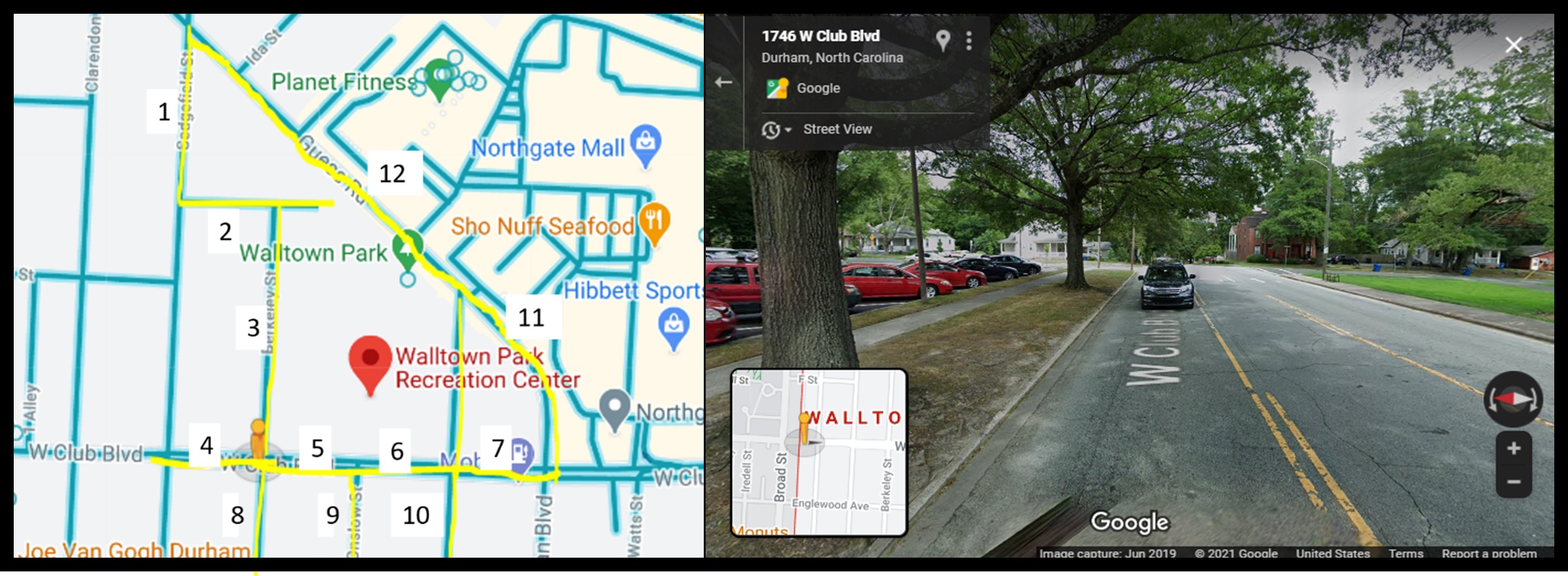Measuring Place
These days it’s rare to look forward to a zoom call, but monthly check-ins with the GoingPlaces team are ones that I’ve come to eagerly await. On the calls, we typically have staff from Durham Parks and Recreation, faculty from NC State University, a colleague from the Institute for Transportation Research and Education, and staff, students, and faculty across various departments at Duke. There is nothing particularly significant that happens at these meetings, mostly updates on administrative items related to our pilot work with the MyDurham program, but the meeting has become the closest thing to community that I’ve experienced in a while. The diverse range of backgrounds, experiences, and perspectives that come together for these monthly meetings is something I’ve come to particularly appreciate, and I find it inspirational as I carve my role in promoting youth health.
During the last team meeting, I shared findings from neighborhood audits that a student and I had recently completed. The purpose of these audits is to evaluate whether the areas surrounding the select recreation centers have the infrastructure to potentially promote active transport. In other words, prior to delivering the transportation curriculum, we wanted to ensure that that these spaces could, in fact, be accessible by pedestrians, bikers, transit users, so that youth provided with the training could apply lessons from the curriculum to access these recreational spaces.
Neighborhood audits are comprehensive evaluations of the built and natural environments of a given area. They are completed for the roads that directly connect to the facility of interest, in addition to road segments that intersect them. Typically, these audits are done with a street team that physically travels to the area and spends a few hours at each site to complete an evaluation. However, due to COVID-19 precautions, in-person audits were not an option. We had to get a little creative and instead use GoogleStreet View (see below)
For each segement numbered on the figure, we collected information on the built environment factors relevant to active transport, such as sidewalks and their conditions, speed bump, crosswalks, transit stops, bike lanes, and other related characteristics. This was completed for all six recreation facilities that host the MyDurham teen program.
After completing the audits, we found that most of the built environment characteristics surrounding each recreation center was conducive to active transit across all sites. Eager to hear the thoughts from our community partners, I compiled these findings to present to the GoingPlaces team. Following my presentation, a DPR staff member asked a question to the effect of “what are the implications of these findings”. Fully prepped for technical and methodological questions, I was not quite sure what to say in response. Our work with this project focuses on empowering youth to navigate their environment, but not necessarily changing the environment they live in. For example, we can help youth navigate safely to the park on a route without a sidewalk, but ultimately, we are not changing the fact that there is no sidewalk to begin with.
There really is no happy ending to this post; I did not have an epiphany to solve the root issues that are the likely culprits to health disparities in physical activity. But it is something that I have acknowledged as a limitation to this work and something that I am actively working towards addressing.
I’ve identified entities throughout Durham, such as the Durham Bicycle & Pedestrian Advisory Commission (BPAC) and BikeDurham that advocate for equitable access to active transit. Throughout my involvement with this work, I aim to connect with these organizations to identify areas of overlap and to share our findings in spaces that I hope will supplement ongoing work in this area.

